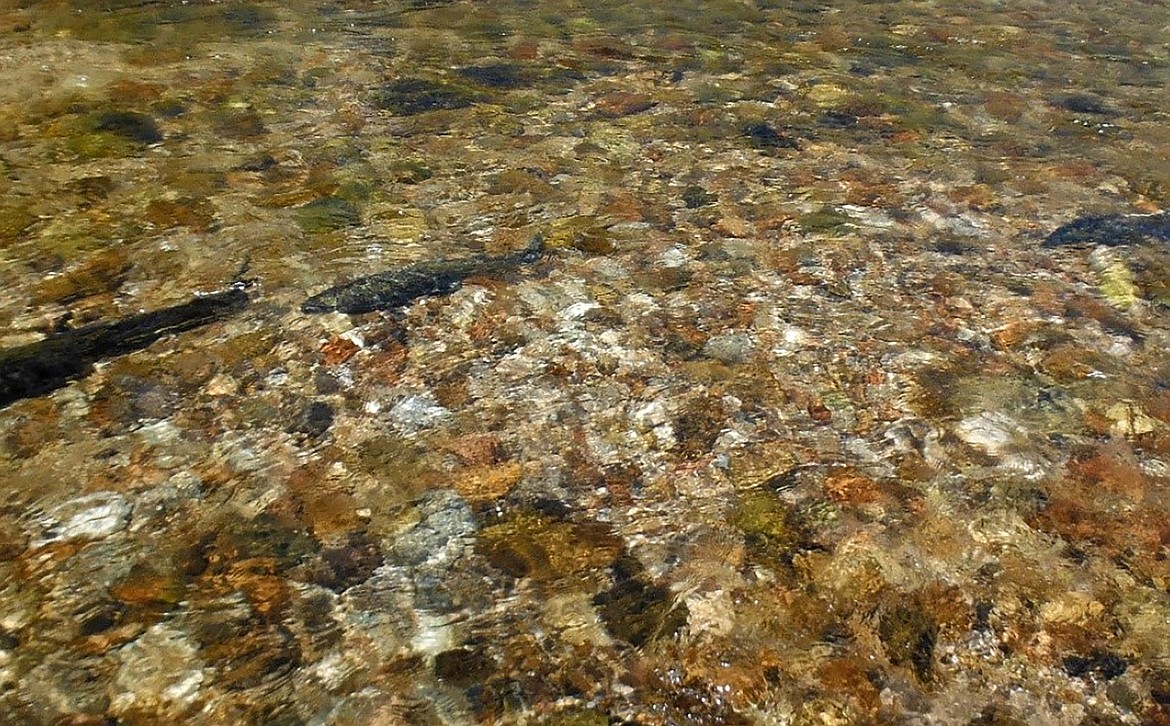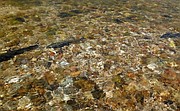River and Sky: A fish biologist’s perspective of counting salmon from the air
On a chilly morning, I’m awake and alert as I can be. I’m strapped into a helicopter seat, flight helmet on, doors off, safety checks done, GPS in one hand, radio in the other and a data sheet secured to my thigh. The excitement grows as the rotor blades pick up momentum and start humming loudly. We lift off from the ground and begin our trip into the backcountry. As I look over the wilderness mountains, my heart is pounding, I feel like a fish out of water and think, “How did I end up here? I’m a fish biologist!”
As fisheries biologists, we are used to walking along a streambed looking down to see what fish we can find. However, every September in the Middle Fork of the Salmon River tributaries, we shake things up a bit and take on an entirely different perspective of fisheries: flying.
For over 70 years, biologists have been counting Chinook salmon nests, called redds, in the Middle Fork of the Salmon River to estimate how many Chinook salmon are returning from the ocean to these tributaries to spawn. Spring-summer Chinook, which refers to their adult upstream migration timing, are listed as threatened under the federal Endangered Species Act.
As with other regional salmon species, these fish have very important ecological, cultural and economic roles in Idaho, so Fish and Game biologists put a great amount of effort into monitoring their populations to better protect and manage them. A key part of management is continually assessing reproduction and population abundance to track trends over time, and that is where redd counts come into play.
Wild spring/summer Chinook salmon are born in tributaries of the Middle Fork Salmon River, and then swim about 900 miles from central Idaho to live and grow in the ocean. After a few years, they swim all the way back to their natal stream to dig a redd and spawn before they die, usually arriving August through September. As females turn on their side and flap their tails in the gravel to dig a redd, a few males will begin to gather around her and wait. The males chase each other and fight for the best position to fertilize her eggs once she lays them. One female usually digs one redd, so counting redds year after year is a good method for estimating female abundance to understand sex ratios and calculate total abundance over time.
Many of these redd count surveys are conducted on foot, however some of the more remote tributaries are difficult or unsafe to walk, so it makes more sense to do aerial surveys from a helicopter. But how can we see a redd from all the way up there?
Biologists spend a lot of time studying redd characteristics and the typical surrounding aquatic habitat so we know what to look for. Fortunately for us, female Chinook salmon turn over a lot of cobble when digging the redd, so algae breaks loose and the newly exposed rocks are clean and contrast well with the surrounding river bottom, creating a bright patch that can be spotted from the air. Sometimes, if we are lucky, we can even see a female salmon and multiple males around the redd.
Low-altitude backcountry flying can be difficult and potentially hazardous. Helicopter pilots and biologists encounter several challenges during these surveys. Inclement weather, especially high winds, is a major player when flying in remote canyons and must be monitored very closely before and during flights. The pilot stays in close communication with regional flight followers to keep track of approaching weather patterns.
For the biologist, the angle of sunlight on the water and associated cloud cover can make redds difficult to spot. Another big challenge is wildfires: smoke from wildfires creates poor visibility and unsafe flying conditions, so the pilot and biologists need to adapt their flight plans quickly to avoid dangerous areas.
In 2021, two large wildfires in the Frank Church River of No Return Wilderness delayed and prohibited surveys in some areas. Although we are excited to get the data, safety is the number one concern, and sometimes the best decision is to leave early in order to get home safely.
The goal of ongoing redd count surveys, both ground and aerial, is to contribute to the dataset that informs trends in adult Chinook abundance and reproductive parameters. This long-term dataset provides relative comparisons of abundance across spawn years and is essential for Chinook salmon status assessments under the Endangered Species Act.
Datasets like the Middle Fork Salmon River redd counts are crucial because they increase our understanding of the life history and population trends of an important threatened species, which helps improve our management and conservation efforts. Looking down into these beautiful streams from a helicopter certainly is a different perspective, and reminds us of the bigger picture that we are working towards.
Check out the wild salmon and steelhead page for more information about the science behind conserving Idaho’s wild salmon and steelhead.
Carli Baum is a fisheries biologist with the Idaho Department of Fish & Game.



